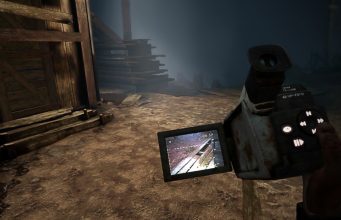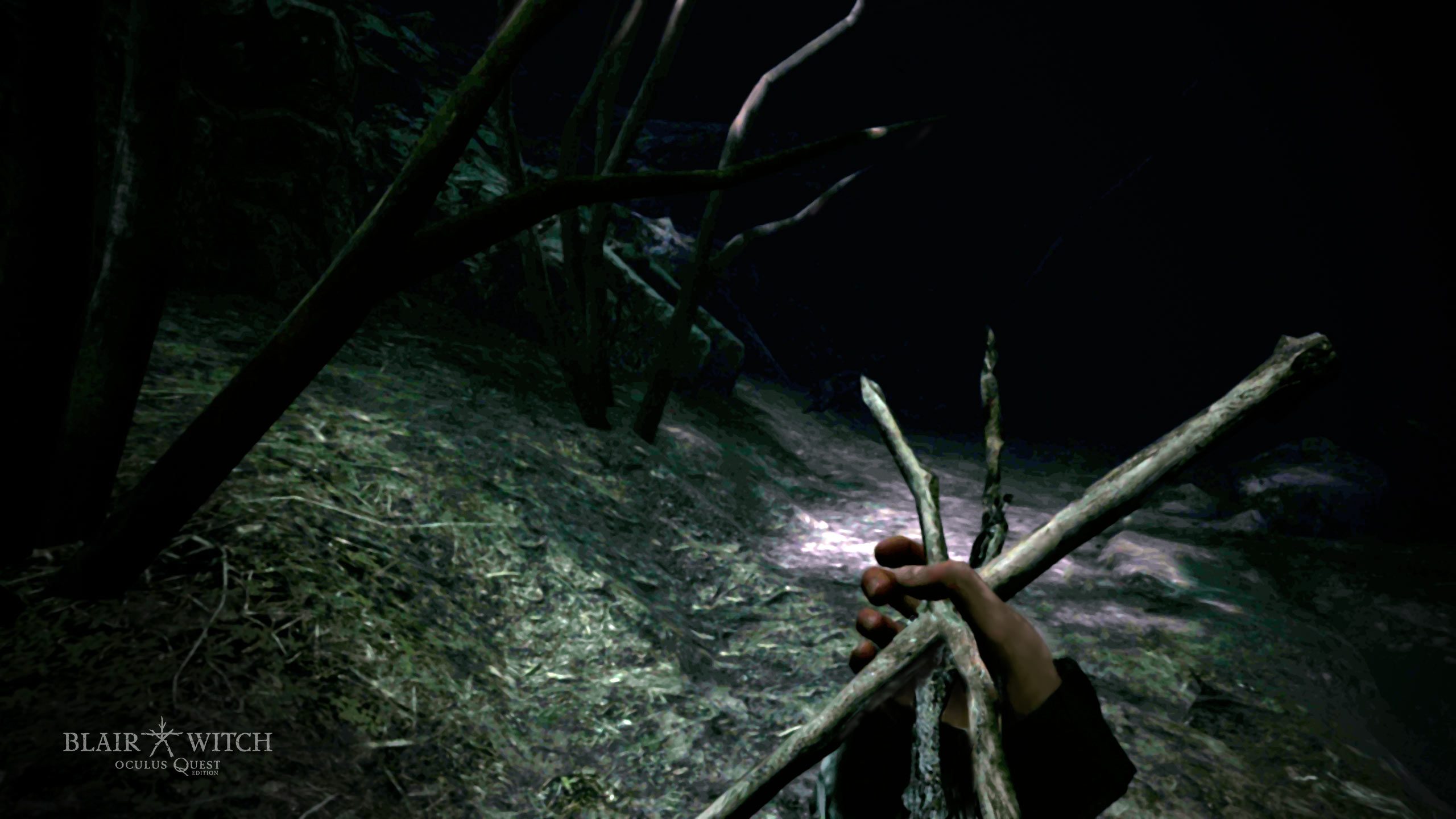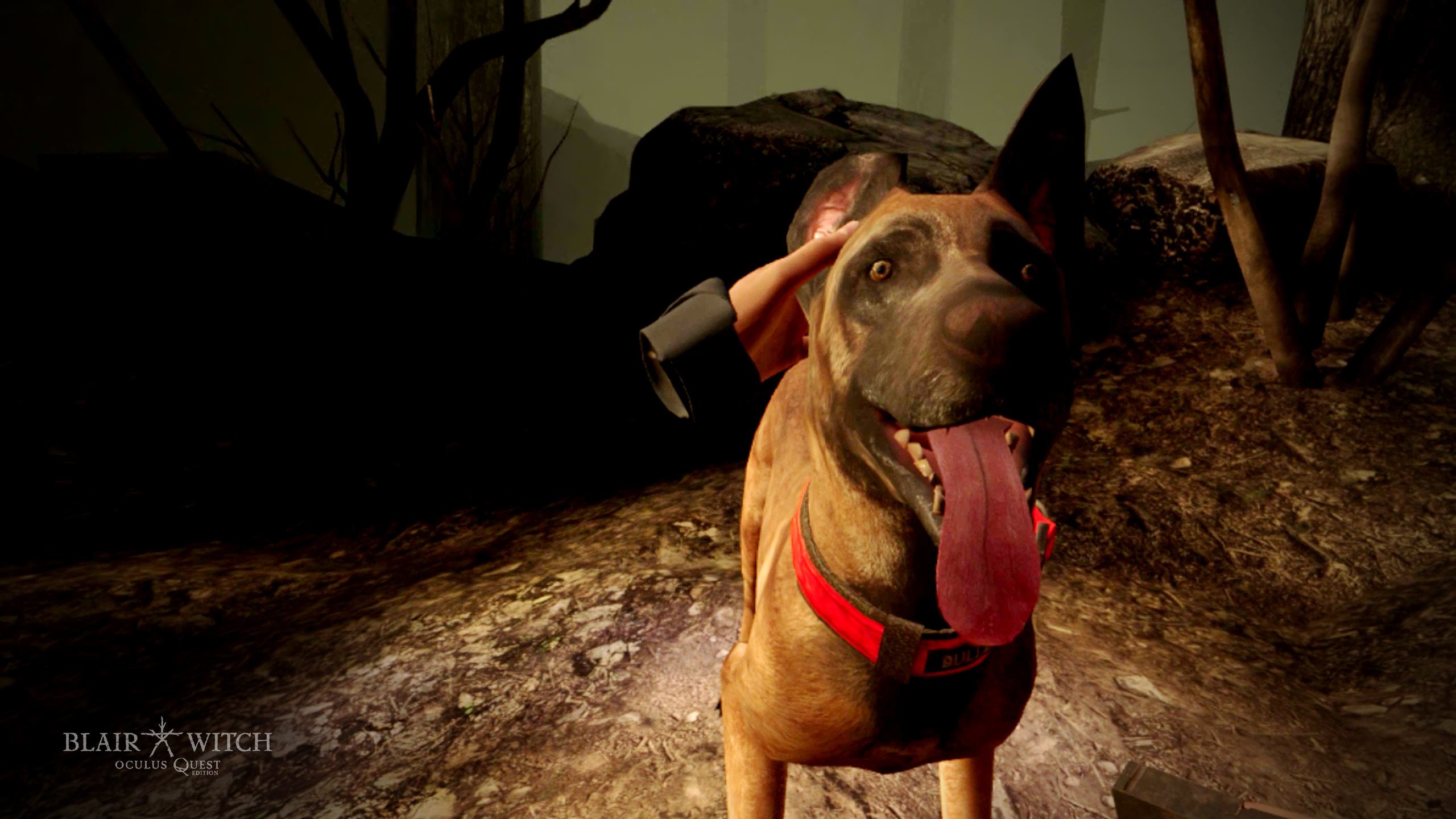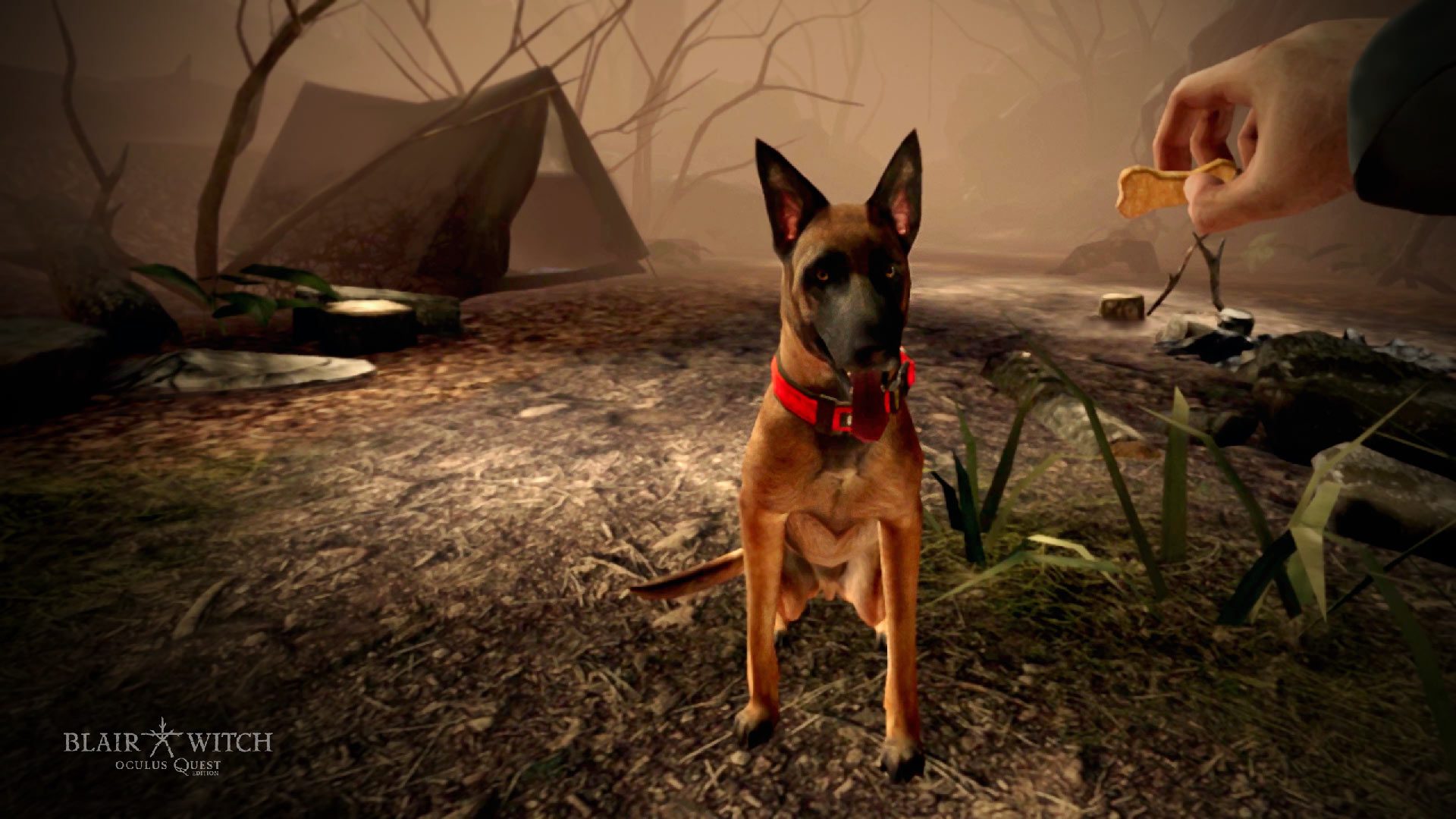
Games built on film franchises are rarely good for a reason. Many suffer from comparatively lower budgets and seem to fundamentally lack creative flexibility. More often than not, this ends up leading to a clumsy replication of the source material and a big disappointment on the part of the player. Thankfully, this isn’t true for Blair Witch, the story-driven psychological horror game first launched on PC in 2019, and now rebuilt for Oculus Quest. The VR port is a bit rough around the edges, but even with its momentary jankiness and lower graphical fidelity it delivers a dark, bone chilling story that forces you head first into insanity.
Blair Witch: Oculus Quest Edition Details:
Available On: Oculus Quest
Release Date: October 29th, 2020
Price: $30
Developer: Bloober Team
Reviewed On: Quest (2019)
Gameplay
Rebuilt for VR, Blair Witch: Oculus Quest Edition immerses you in the haunted forest first conjured up in The Blair Witch Project (1999), the breakout ‘found footage’ horror film which spawned a slew of sequels, books, and video games.
Taking on the role of ex-policeman Ellis, you join a search party for a missing boy who’s gone missing in Maryland’s Black Hills Forest, a place where even daytime feels dark and claustrophobic. Things aren’t as they seem though, as Ellis battles with demons (both literal and personal) and marches deeper into his own troubled past as he picks up a trail leading to the boy. No spoilers here, but there’s multiple endings depending on actions you take throughout the game.

The game suggests wearing headphones for a more immersive experience, but you’d be forgiven for sticking to Quest’s built-in audio if you want to keep some filter between you and what lies ahead. Honestly, the game is intense and comes with a trigger warning because of the realistic depictions of post-traumatic stress, and—you know—horrible monsters chasing you through the forest.
Jump scares are few and far between, but are timed well enough to keep you on your toes. In the end, it’s less about fighting the monsters head-on, and more about unraveling the story through the eyes of a man who is recovering from PTSD in the worst place imaginable. You only have a flashlight, old-school cellphone, CB radio, a camcorder to reveal hidden secrets and play found footage, and your trusty German Shepard, Bullet. No guns and no melee weapons.

Although sometimes one of the biggest immersion breakers (more on that in Immersion), Bullet is overall an awesome addition. He alerts you to baddies ahead, uncovers key items, and keeps you on the trail which sometimes isn’t where you’d think to go. It’s so much nicer having Bullet around than a constantly chattering guide to force you through the experience, and also leaves you with your own thoughts on how to accomplish tasks that lie ahead. You can pet him, call him back with your whistle, command him to seek, and let him sniff items to get you on the right trail.
The cellphone is a cool addition too, as you receive calls and text messages that give some flavor to the story. Dialogue between you and your significant other Jess never feels super important to the story, but there are times when an SMS will really creep you out. The radio does essentially the same job to stay in contact with the rest of the search party, albeit without text messaging.

My most favorite addition by far is the camcorder. Found footage scattered throughout the game not only lets you see key moments in the story as they’re captured by a certain antagonist, but also lets you magically conjure elements in your location like a key item, or clear a pathway that was formerly blocked. There’s a few times in the game when looking directly at monsters results in your grizzly death too, which forces you to physically look away from any oncoming demon and follow a trail revealed by the bewitched camcorder.
Outside of using the camcorder there aren’t a lot of puzzles to solve, which is a shame. Puzzles are mostly momentary fetch quests which don’t rely on anything more than a good spatial memory of the level. Inventory is also pretty lackluster, as objects magically disappear from your hands, never to be seen again. Love it or hate it, the game’s body-mounted holsters were always a source of confusion, forcing me to look down to accurately grab the cellphone and not the radio, or the flashlight and not the camcorder. Some physical separation here would have made it much less frustrating. A journal of all your findings was equally pretty useless, and should really only be used if you’re taking the game in much smaller bites than I did.

In the end, it took me around five hours to play straight through, although your mileage may vary as you seek to unlock multiple endings. Immersion-breakers aside, I really enjoyed my time with Blair Witch. Its apparent lack of sidequests makes it worthy of really only a single playthrough and not much more.
Still, it was an intense trip that was soaked with existential dread and phycological terror. Sure, you can die and be thrown back to your last checkpoint, but it’s the bumps in the night and the unexpected thrills that definitely leave its mark.
Immersion
While the story and overall basic structure of the game’s one-way trip through Black Hills Forest is really well done, some of it felt somewhat shoehorned into VR. Cut scenes are done via immersion-breaking 2D windows which I really wish simply weren’t there.
Gripes aside for a moment: the games tension comes in a wide assortment of flavors that really seeps into your reptile brain. Creepy bumps in the night scare you away from the periphery of levels, dilapidated interiors force you to confront grizzly deaths, and the threat of meeting a demon around any corner is very real. Disjointed bits of the game confused you, and keep you wondering what’s real, or if any of it’s real in the first place. Photos of supposed victims litter the world, and you’re always left guessing if you’ll find your own polaroid snapshot among the bunch. Ok, more gripes now.
One of the biggest things you’ll notice is overall graphical quality. On the original Quest, it’s predictably lower than the PC or console versions as most levels are muddy and samey feeling. I’m still waiting on receiving my own Quest 2, so I wasn’t able to verify whether the headset’s extra horsepower from the Snapdragon XR2 significantly improved render distance and texture quality, two of my main gripes. Bloober Team says Quest 2 improves the quality of textures, 3D assets like dog fur, and foliage density.

The king of jank though is undoubtedly Bullet, which is a crying shame. Oftentimes I’d find him running at full clip into a cluster of trees, where he’d remain in his infinite forward bound. He’s sweet and helpful, which offsets this a bit, but seeing him run through a minecart or robotically readjusting to get through obstacles was still a let down. You can pet him, tussle his ears and even feed him for a laugh, but there’s hardly ever a peaceful moment when it really makes sense to take the time.
As is, it’s still pretty amazing what the studio was able to do on the modest Quest 1 hardware. Much of the game is dark and very foggy, which forces you to focus on near-field objects. It’s not to say you can’t sense the game chunking away and loading the bits just outside fog—there was definitely some jank there, as trees would pop in and out of view at times. Loading screens are also a bit of a pain, as you’ll be stopped multiple times throughout any of the 17 chapters to load a new section. Thankfully there isn’t any backtracking, so these screens only really appear in about 20-minute intervals.
Comfort
While the game has been re-engineered around the need for VR support, and many of the standard locomotion and comfort options are available, level layout requires you to go up and down inclines like hills and bumps in the road, which can be a little uncomfortable. One instance of an impossibly twisted house was a turn off, although fairly brief.
Both hand and head-relative forward locomotion is available alongside the ability for smooth forward and teleporting. Comfort-specific stuff, like variable snap-turn and VR blinders are also available to keep you from feeling too queasy as you make your way through the densely-packed levels.
Thankfully the game comes with both standing and seated standing modes, which comes with a manual height adjuster for fine-tuning.
The post ‘Blair Witch: Quest Edition’ Review – Real Psychological Thrills Worthy of the Name appeared first on Road to VR.
Ream more: https://www.roadtovr.com/blair-witch-vr-quest-review/
No comments:
Post a Comment